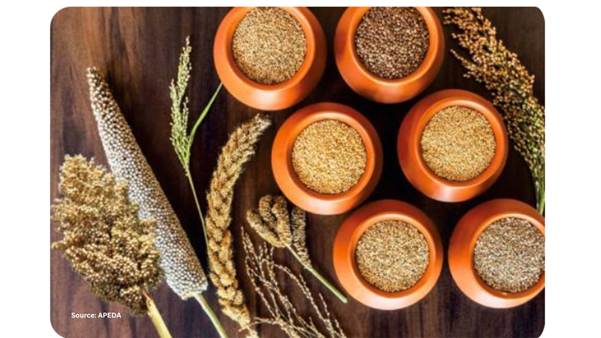Guddu Dongare, a farmer from Betul district in Madhya Pradesh, is inspiring a quiet revolution — one millet seed at a time. Once faced with an unproductive patch of fallow land, Guddu’s fortune took a turn after he attended a farmer field school organised by the local agriculture department.
It was here that he first heard about millets. He learnt that millets can withstand changing weather conditions, need fewer inputs, grow in a shorter period, and adapt well to nearly all types of soils.
Armed with this new knowledge and support from the Rashtriya Krishi Vikas Yojana (RKVY), Guddu decided to experiment. He chose to grow Kodo (Kutki) millets on one hectare of his fallow land. With the guidance of field officers, he adopted modern techniques, including row farming. The change was visible within weeks.
Guddu’s harvest yielded 12 quintals of Kodo millet. After selling his produce, he earned a profit of ₹10,000 from just one hectare. More than the income, it was the confidence that came with it.
The regular visits by agriculture officers became more than technical guidance. They gave him courage to keep experimenting, taught him how to use organic manure, and showed him how millets could be a long-term solution for both the farm and the farmer.
His success has drawn attention in the village. Local farmers are now considering millet cultivation on underutilised or less productive land. Many are also becoming aware of the health benefits of millets, besides their economic potential.
Guddu’s example demonstrates how informed support and sustainable practices can bring real improvement, even from land once considered unviable.
Millets, popularly known as Shree Anna, are a group of small-grained cereals valued for their exceptional nutrition and adaptability. At India’s request, the United Nations General Assembly declared 2023 as the International Year of Millets, recognising their importance for food and nutritional security.
Millets are rich in protein, vitamins and minerals and are naturally gluten-free. They have a low glycaemic index, making them suitable for people with diabetes and celiac disease. Their nutritional quality makes them superior to wheat and rice, earning them the name “nutritious cereals”.
India is currently the largest producer of millets globally, contributing 38.4% of global production. Their ability to grow with minimal inputs and withstand climatic variations has made them a sustainable choice for farmers and a significant part of the nation’s food basket.
As of July 2025, India has achieved a total millet production of 180.15 lakh tonnes in 2024–25, which is 4.43 lakh tonnes higher than the previous year. Meanwhile, the country exported a total of 89,164.96 tonnes of millets in 2024-25. The total value of these exports stood at 37 million US dollars.
Millets, or Shree Anna, hold the promise of a healthier, more resilient, and sustainable future. With their rich nutritional profile and climate-smart qualities, they offer a practical solution to many challenges faced by Indian agriculture today.
From enhanced production and value addition to focused promotion and global outreach, India is setting a strong example in millet mainstreaming. The momentum built during the International Year of Millets and beyond must now translate into lasting change, making millets a daily part of India’s food culture and economy.














